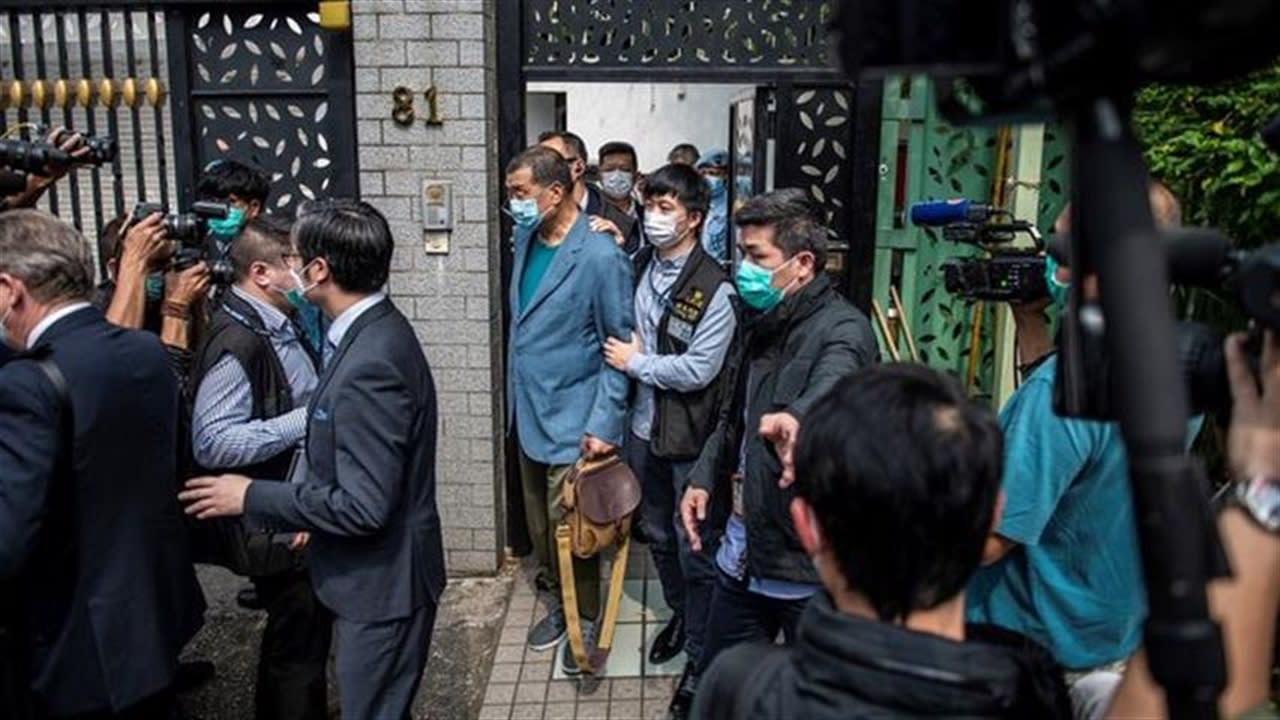I Sampled My Way Through the Wildly Pretentious World of High-End Weed Products
AMERICAN NOT CANADIAN PRODUCTS
Dave Holmes, Esquire•April 20, 2020

Photo credit: Hearst Owned
From Esquire
I am not, by and large, a weed guy. Oh, I have tried, but through substantial trial and error I have determined that I lack the essential level of chill to pull the whole thing off. For years, I've regarded the stoners in my life with awe and envy; they seem so relaxed and cheerful, while one hit off a vape pen tends to nudge me into the anxiety that is always just over my shoulder. I've observed that marijuana has a way of forcing a person to feel their deepest emotion, which for many people is “potato chips taste good,” and for me is “call 911 I’m not breathing the right amount.” Weed strips away a person’s defenses, which is all perfectly fine unless, like me, you are one hundred percent made of defenses.
I’m not good at getting high, is what I’m telling you.
But I am also one of just a couple Esquire writers in the state of California, where cannabis is not only legal but officially an essential business. My New York-based colleagues receive the latest news from the emerging luxury weed segment every day, getting dispatches about exciting new products that they can’t try because it’s illegal to send this stuff through the mail. So a few weeks ago, I said, “Forward those babies to me,” and they did, and tons of elegantly packaged THC (and CBD) goods came to my door, and then immediately the entire world shut down and now I can’t leave my house.
The last month has presented me with the perfect conditions to sample some upscale cannabis stuff and determine whether there’s one brand out there just for me, or if there is such a thing as a bespoke panic attack. It’s been an enlightening experience, and a nice variation on each day’s coffee-to-bourbon trajectory. I’m still not chill enough to be a stoner, not even a high-end weed stoner, but the quarantine period is young. Here are my findings.
Treat yourself to 85+ years of history-making journalism.
Subscribe to Esquire Magazine

From Esquire
I am not, by and large, a weed guy. Oh, I have tried, but through substantial trial and error I have determined that I lack the essential level of chill to pull the whole thing off. For years, I've regarded the stoners in my life with awe and envy; they seem so relaxed and cheerful, while one hit off a vape pen tends to nudge me into the anxiety that is always just over my shoulder. I've observed that marijuana has a way of forcing a person to feel their deepest emotion, which for many people is “potato chips taste good,” and for me is “call 911 I’m not breathing the right amount.” Weed strips away a person’s defenses, which is all perfectly fine unless, like me, you are one hundred percent made of defenses.
I’m not good at getting high, is what I’m telling you.
But I am also one of just a couple Esquire writers in the state of California, where cannabis is not only legal but officially an essential business. My New York-based colleagues receive the latest news from the emerging luxury weed segment every day, getting dispatches about exciting new products that they can’t try because it’s illegal to send this stuff through the mail. So a few weeks ago, I said, “Forward those babies to me,” and they did, and tons of elegantly packaged THC (and CBD) goods came to my door, and then immediately the entire world shut down and now I can’t leave my house.
The last month has presented me with the perfect conditions to sample some upscale cannabis stuff and determine whether there’s one brand out there just for me, or if there is such a thing as a bespoke panic attack. It’s been an enlightening experience, and a nice variation on each day’s coffee-to-bourbon trajectory. I’m still not chill enough to be a stoner, not even a high-end weed stoner, but the quarantine period is young. Here are my findings.
Treat yourself to 85+ years of history-making journalism.
Subscribe to Esquire Magazine

Photo credit: Courtesy Kiva
Camino Sleep Gummies
Sleep can sometimes be a problem for me, and when it is, I find I have nowhere to turn; melatonin doesn’t really do the trick, and like any sensible person, I’m absolutely terrified by the possibility of Ambien-tweeting. So I was eager to try these delicious little gummies, which promise to put you to sleep with the great taste of midnight blueberry (just like regular blueberry except it fucks). Each one has 5mg of THC and 1mg of CBN, which I don’t know what that is, but they do as they promise, perhaps a bit too well. One whole gummy knocked me right out, and when I woke up at 3 a.m. for my nightly worry appointment, I found that I was still stoned. Fun fact: If there is one time you don’t want an overactive, weed-fueled imagination, it’s in the middle of the night at the height of a pandemic. One half of one gummy actually does the trick, and stretches your luxury weed dollar as well. But learn from my mistakes, and take it the moment you go to bed. Otherwise you’ll be on the couch thinking “I’m drowsy, and my friends are only pretending to like me.”

Photo credit: Courtesy
Atlas
Ember Edibles
Edibles intimidate me, and you know why. Everybody knows somebody who had a bite of one, got impatient because they weren’t super-stoned in two seconds, ate the whole rest of it, and then climbed a tree and now they live there. So naturally, I approached these giant granola bricks with extreme caution. My boyfriend and I each tore a tiny little piece off the corner of Atlas's Ember Sativa Caramel Cashew and Cayenne flavor, ate it, and waited. For hours, nothing happened, then just as we were going to bed, we looked at each other and said, “Oh, no.” I was high as fuck for the next 36 hours, three of which I spent on an airplane that I briefly convinced myself I’d gotten on by accident. (Landed in Dallas—on purpose—and ate a bowl of queso before I left the airport.) Good flavor, though. If you enjoy being terrified by your snacks, go get it.

Atlas
Ember Edibles
Edibles intimidate me, and you know why. Everybody knows somebody who had a bite of one, got impatient because they weren’t super-stoned in two seconds, ate the whole rest of it, and then climbed a tree and now they live there. So naturally, I approached these giant granola bricks with extreme caution. My boyfriend and I each tore a tiny little piece off the corner of Atlas's Ember Sativa Caramel Cashew and Cayenne flavor, ate it, and waited. For hours, nothing happened, then just as we were going to bed, we looked at each other and said, “Oh, no.” I was high as fuck for the next 36 hours, three of which I spent on an airplane that I briefly convinced myself I’d gotten on by accident. (Landed in Dallas—on purpose—and ate a bowl of queso before I left the airport.) Good flavor, though. If you enjoy being terrified by your snacks, go get it.

Photo credit: Courtesy Omura
Heat-Not-Burn Device
A high-tech proprietary system so simple it confused the hell out of me, the Omura device uses “heat-not-burn” technology to “activate the terpenes without charring the plant, allowing the plant’s true flavor to shine.” What this means is that you stick a cardboard tube full of weed into one end of the device, touch a button, wait for it to heat up, and then you have one three-minute session to hit it. Whether you hit it once or as many times as three minutes will allow, the tube is spent at the end. The starter kit came with a pack of 10 tubes, half of which we wasted trying to figure out how the Omura works. The machine will only take the proprietary tubes, the proprietary tubes will not work in any other machine. In the brave new world of upscale weed products, this is exactly like having a Sega Saturn.

Photo credit: Courtesy Canndescent
Pre-Rolls
You knew someone was going to use the aspirational marketing speak of Goop culture to sell you joints, and Canndescent’s promise to “marry the mastery of cannabis cultivation with the canvas of your life” tells you it's the one for the job. The Canndescent sampler pack comes with one joint each of its five strains—Calm, Cruise, Create, Connect, and Charge—and the tasting notes eschew the indica/sativa jargon of the dispensary in favor of more direct language. If it’s “time to laugh, go out with friends, or get intimate, invite Canndescent Connect.” If you’re ready to “paint, jam, code, blog, or game,” then “find your muse in Canndescent Create.” Is it “the perfect stolen moment to sink into the pastel, polyester embrace of a Golden Girls marathon and a full tube of Pringles?” Then really any of them will do, and I made that one up anyway. Maybe it’s the Oprah’s Favorite Things of it all, but these managed to keep the heebie-jeebies at bay, and lighting a joint has such a pleasing, analog feel to it, like putting a warm and crackly old record on a turntable. These were my favorite of the bunch, though at press time I have yet to paint, jam, or code.

Pre-Rolls
You knew someone was going to use the aspirational marketing speak of Goop culture to sell you joints, and Canndescent’s promise to “marry the mastery of cannabis cultivation with the canvas of your life” tells you it's the one for the job. The Canndescent sampler pack comes with one joint each of its five strains—Calm, Cruise, Create, Connect, and Charge—and the tasting notes eschew the indica/sativa jargon of the dispensary in favor of more direct language. If it’s “time to laugh, go out with friends, or get intimate, invite Canndescent Connect.” If you’re ready to “paint, jam, code, blog, or game,” then “find your muse in Canndescent Create.” Is it “the perfect stolen moment to sink into the pastel, polyester embrace of a Golden Girls marathon and a full tube of Pringles?” Then really any of them will do, and I made that one up anyway. Maybe it’s the Oprah’s Favorite Things of it all, but these managed to keep the heebie-jeebies at bay, and lighting a joint has such a pleasing, analog feel to it, like putting a warm and crackly old record on a turntable. These were my favorite of the bunch, though at press time I have yet to paint, jam, or code.

Photo credit: Courtesy
Mello
CBD Edibles + Suppositories
CBD is everywhere, in creams and tinctures and pills, though nobody can tell me exactly what it does. I am skeptical of its powers, largely because we are asked to hold these two ideas in our minds at the same time: CBD has no psychoactive properties and it totally chills you out. I’ve tried it in its many forms, and I’ve never noticed much of an effect, but hope springs eternal. Mello sent me a couple of CBD products, the first of which was an elegant box of infused sea salt caramels that definitely improved my mood, because free snacks always do. They’re tasty! Here’s the other sample they sent!

Mello
CBD Edibles + Suppositories
CBD is everywhere, in creams and tinctures and pills, though nobody can tell me exactly what it does. I am skeptical of its powers, largely because we are asked to hold these two ideas in our minds at the same time: CBD has no psychoactive properties and it totally chills you out. I’ve tried it in its many forms, and I’ve never noticed much of an effect, but hope springs eternal. Mello sent me a couple of CBD products, the first of which was an elegant box of infused sea salt caramels that definitely improved my mood, because free snacks always do. They’re tasty! Here’s the other sample they sent!

Photo credit: Courtesy
Who is this for? Who is this committed both to CBD and to not swallowing? It’s entirely possible that suppositories could be the delivery method that finally sells me on the healing and chilling powers of CBD, but we will never know. Esquire is going to have to start paying me a lot more if I’m going to put things in my butt.

Who is this for? Who is this committed both to CBD and to not swallowing? It’s entirely possible that suppositories could be the delivery method that finally sells me on the healing and chilling powers of CBD, but we will never know. Esquire is going to have to start paying me a lot more if I’m going to put things in my butt.

Photo credit: Courtesy
CBD Pillow
Pillow
Yeah, there is now a CBD Pillow, and I have one. Here’s how it works: The pillowcase has evidently been infused with millions of microcapsules of CBD—using the patented micro-encapsulation technology, naturally—which the friction of your head causes to burst, releasing microdoses into your skin and hair follicles throughout the night to relax you as you sleep. As for if it works: Like CBD itself, I truly have no idea, but it’s a good, solid, comfy memory foam pillow. I have been sleeping better, but it’s possible I’m just tired from telling everyone I’ve ever met that I have a CBD pillow.

CBD Pillow
Pillow
Yeah, there is now a CBD Pillow, and I have one. Here’s how it works: The pillowcase has evidently been infused with millions of microcapsules of CBD—using the patented micro-encapsulation technology, naturally—which the friction of your head causes to burst, releasing microdoses into your skin and hair follicles throughout the night to relax you as you sleep. As for if it works: Like CBD itself, I truly have no idea, but it’s a good, solid, comfy memory foam pillow. I have been sleeping better, but it’s possible I’m just tired from telling everyone I’ve ever met that I have a CBD pillow.

Photo credit: Courtesy
ALT
Liquid Cannabis
ALT stands for Advanced Liquid Technology, which in this context means “pot water.” It’s a colorless, flavorless liquid that comes in 5mg vials, which you can pour into the beverage of your choice for the unforgettable experience of roofie-ing yourself. This would seem to be the perfect product for the stoner on the go, for someone who really likes to get high but doesn’t want anyone to know about it, not even themselves. I split one vial between two tequila-and-sodas that my boyfriend and I had at cocktail hour the other night, and while it’s impossible to know where the tequila ended and the advanced liquid technology began, the overall effect was “when’s dinner?”

ALT
Liquid Cannabis
ALT stands for Advanced Liquid Technology, which in this context means “pot water.” It’s a colorless, flavorless liquid that comes in 5mg vials, which you can pour into the beverage of your choice for the unforgettable experience of roofie-ing yourself. This would seem to be the perfect product for the stoner on the go, for someone who really likes to get high but doesn’t want anyone to know about it, not even themselves. I split one vial between two tequila-and-sodas that my boyfriend and I had at cocktail hour the other night, and while it’s impossible to know where the tequila ended and the advanced liquid technology began, the overall effect was “when’s dinner?”

Photo credit: Courtesy
1906
Drops
The two major selling points of 1906’s drops and chocolates are that the dosages are small, and they start working within 20 minutes. At last, someone to give me my highs exactly the way I like them: fast-acting and barely perceptible. Like Canndescent, 1906 divides its product line up by general feeling: Genius is for work, Midnight for sleeping, Love for lovin’. Each drop—they look like mints, but take it from me and do not chew them—contains 2.5 to 5mg of THC, perfect for the timid among us and a good start for everyone else. I took one chocolate-covered Go energy drop before a nice long run around my neighborhood recently, and I’ll be damned if the new Dua Lipa didn’t sound better than ever.

1906
Drops
The two major selling points of 1906’s drops and chocolates are that the dosages are small, and they start working within 20 minutes. At last, someone to give me my highs exactly the way I like them: fast-acting and barely perceptible. Like Canndescent, 1906 divides its product line up by general feeling: Genius is for work, Midnight for sleeping, Love for lovin’. Each drop—they look like mints, but take it from me and do not chew them—contains 2.5 to 5mg of THC, perfect for the timid among us and a good start for everyone else. I took one chocolate-covered Go energy drop before a nice long run around my neighborhood recently, and I’ll be damned if the new Dua Lipa didn’t sound better than ever.

Photo credit: Courtesy
Artet
Cannabis Aperitif
Artet is an alcohol-free cannabis spirit “drawn from the history, the culture, and the very moment of the aperitif,” because this is the way we’re talking now. It’s made with eight botanicals, though the taste is mainly “lemon peel.” I mixed a couple of Artet-and-tonics the other afternoon as we cleaned the house, and though the flavor definitely improved with a couple drops of agave syrup, it was a mild, easy-drinking daytime cocktail with a subtle and quick-acting effect. I thought, “I could see myself doing this again.” And then, in celebration of the history, the culture, and the very moment of the weed aperitif, I went to the bathroom in my own home and got lost on the way back.

Artet
Cannabis Aperitif
Artet is an alcohol-free cannabis spirit “drawn from the history, the culture, and the very moment of the aperitif,” because this is the way we’re talking now. It’s made with eight botanicals, though the taste is mainly “lemon peel.” I mixed a couple of Artet-and-tonics the other afternoon as we cleaned the house, and though the flavor definitely improved with a couple drops of agave syrup, it was a mild, easy-drinking daytime cocktail with a subtle and quick-acting effect. I thought, “I could see myself doing this again.” And then, in celebration of the history, the culture, and the very moment of the weed aperitif, I went to the bathroom in my own home and got lost on the way back.

Photo credit: Courtesy
Besito
Vape Pens
Besito makes a line of single-use vape pens in attractive, hexagonal copper tubes. Vapes of all kinds are viewed with suspicion these days, but Besito’s safety message is both reassuring and free of the highfalutin language that luxury weed too often employs: “Our formulations were developed by biochemists, and contain absolutely no Vitamin E, diluents, fillers, or harmful ingredients. Just the good stuff: dank, sweet weed.” The honesty is refreshing. I got the mint brand, which promised an “uplifting, energetic kind of high that’s perfect for all day long.” And while the flavor took me back to the dark period in my life when I smoked menthol cigarettes, the effect was subtle. Anxiety-free. One might even call it “dank.”
You Can Finally Stream 'Cooking With Cannabis,' The Cooking Competition Show Starring Kelis As A JudgeAlexis Morillo,Delish•April 20, 2020

Besito
Vape Pens
Besito makes a line of single-use vape pens in attractive, hexagonal copper tubes. Vapes of all kinds are viewed with suspicion these days, but Besito’s safety message is both reassuring and free of the highfalutin language that luxury weed too often employs: “Our formulations were developed by biochemists, and contain absolutely no Vitamin E, diluents, fillers, or harmful ingredients. Just the good stuff: dank, sweet weed.” The honesty is refreshing. I got the mint brand, which promised an “uplifting, energetic kind of high that’s perfect for all day long.” And while the flavor took me back to the dark period in my life when I smoked menthol cigarettes, the effect was subtle. Anxiety-free. One might even call it “dank.”
You Can Finally Stream 'Cooking With Cannabis,' The Cooking Competition Show Starring Kelis As A JudgeAlexis Morillo,Delish•April 20, 2020

Photo credit: Dave J Hogan - Getty Images
From Delish
Update, April 20, 2020: Netflix's new show Cooked with Cannabis starring Kelis as a judge is available for streaming today. The cooking competition show will have contestants going up against one another to make the best cannabis-infused dish.
The show has just six episodes in its first season with each episode clocking in around 35 minutes. So, yes, it's totally binge-watchable. Contestants will have to make full three-course meals for the panel of judges and the winning cook will receive a $10,000 cash prize.
Original Post, March 18, 2020: A new show is hitting Netflix next month and we have a feeling you'll want to add it to your queue. Cooked with Cannabis is a cooking competition series and the contestants are challenged to make masterful dishes made with cannabis-infused ingredients.
What makes it even better is that it will be hosted by Kelis, the singer of everyone's guilty pleasure anthem "Milkshake" (and cookbook author). She'll be hosting alongside Leather Storrs, a chef from Portland, Oregon.
The series, which is only a six-episode season at the moment, according to Food & Wine, will function like most other cooking competitions. Three professional chefs will go head-to-head while coming up with a three-course meal to wow the judges. Each meal will have a different theme it must follow, such as world cuisine or futurist food, but their dishes have to include cannabis.
Each meal will then be judged by Kelis, Leather, and a guest judge. Some of the guest judges include Ricki Lake and comedian Mary Lynn Rajskub, so the season is bound to be star-studded. Once the winning cook is decided, that chef will win a $10,000 cash prize.
In an interview with Food & Wine, Leather explained one of his favorite parts of this show's concept is the way that cannabis is used as a sophisticated ingredient. "Many of the chefs used the plant in non-psychoactive ways: as a flavoring, as a puree in fresh tortillas, or blended into a flour," he told Food & Wine: "This is a show for food people, for stoners and for folks that are curious about both."
Cooked with Cannabis will hit Netflix on April 20, of course.
From Delish
Update, April 20, 2020: Netflix's new show Cooked with Cannabis starring Kelis as a judge is available for streaming today. The cooking competition show will have contestants going up against one another to make the best cannabis-infused dish.
The show has just six episodes in its first season with each episode clocking in around 35 minutes. So, yes, it's totally binge-watchable. Contestants will have to make full three-course meals for the panel of judges and the winning cook will receive a $10,000 cash prize.
Original Post, March 18, 2020: A new show is hitting Netflix next month and we have a feeling you'll want to add it to your queue. Cooked with Cannabis is a cooking competition series and the contestants are challenged to make masterful dishes made with cannabis-infused ingredients.
What makes it even better is that it will be hosted by Kelis, the singer of everyone's guilty pleasure anthem "Milkshake" (and cookbook author). She'll be hosting alongside Leather Storrs, a chef from Portland, Oregon.
The series, which is only a six-episode season at the moment, according to Food & Wine, will function like most other cooking competitions. Three professional chefs will go head-to-head while coming up with a three-course meal to wow the judges. Each meal will have a different theme it must follow, such as world cuisine or futurist food, but their dishes have to include cannabis.
Each meal will then be judged by Kelis, Leather, and a guest judge. Some of the guest judges include Ricki Lake and comedian Mary Lynn Rajskub, so the season is bound to be star-studded. Once the winning cook is decided, that chef will win a $10,000 cash prize.
In an interview with Food & Wine, Leather explained one of his favorite parts of this show's concept is the way that cannabis is used as a sophisticated ingredient. "Many of the chefs used the plant in non-psychoactive ways: as a flavoring, as a puree in fresh tortillas, or blended into a flour," he told Food & Wine: "This is a show for food people, for stoners and for folks that are curious about both."
Cooked with Cannabis will hit Netflix on April 20, of course.
On a socially distanced 420 day, patients find new ways to take the pandemic edge off
Miami Herald via Yahoo News· 1 day agoEvery year on April 20, marijuana lovers across the country come together in an unofficial...
Hooray for Holly-Weed: 19 Celebrity Stoners to Celebrate 420 With (Photos)
The Wrap via Yahoo News· 1 day agoHollywood stars don’t shy away from being 420-friendly. Here are the biggest names in entertainment...
Here's how 4/20 became a holiday for cannabis consumers
Business Insider via Yahoo News· 21 hours agoThe number has expanded to encompass all things that those in the marijuana community hold dear....

Coronavirus sends 420 gatherings up in smoke, but potheads still plan virtual toke
Good Morning America via Yahoo News· 1 day agoAt the age of 81 and having survived a bout with prostate cancer, marijuana icon Tommy Chong meets...
420: What is the annual marijuana celebration and how did it begin?
The Independent via Yahoo News· 1 day ago420 is an annual event taking place on 20 April (the date is 20/4 or in the American date format...
Virtual 4/20 Events For The Quarantined Digital Age
Benzinga via Yahoo Finance· 1 day agoAs death rates rise and social distancing becomes more prevalent, it’s without a doubt that the majority of our population is affected in some capacity....
Just 22 Photos of Rihanna Smoking Weed in Honor of 420
STYLECASTER via Yahoo News· 2 days agoFrom photoshoots to music videos, Rihanna always finds the time to blaze it and puff. The Fenty...
How to Celebrate 4/20 Online
Rolling Stone via Yahoo News· 2 days agoThis year, all of April is 4/20, and the cannabis community had big plans to blaze up together all month long. The annual Mile High420 Festival in...
On 420, we are all stoners. Here is how to eat (and drink) like one in Miami
Miami Herald via Yahoo News· 3 days agoEvery stoner’s favorite holiday, 420, is upon us, and Miami restaurants are rising to the occasion....























